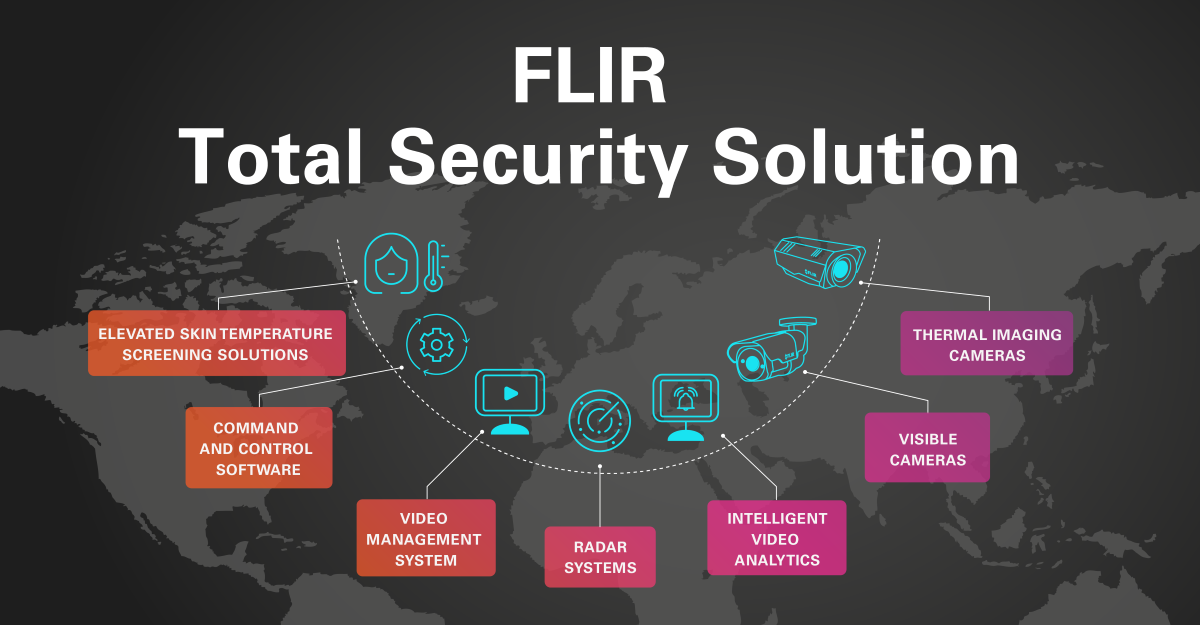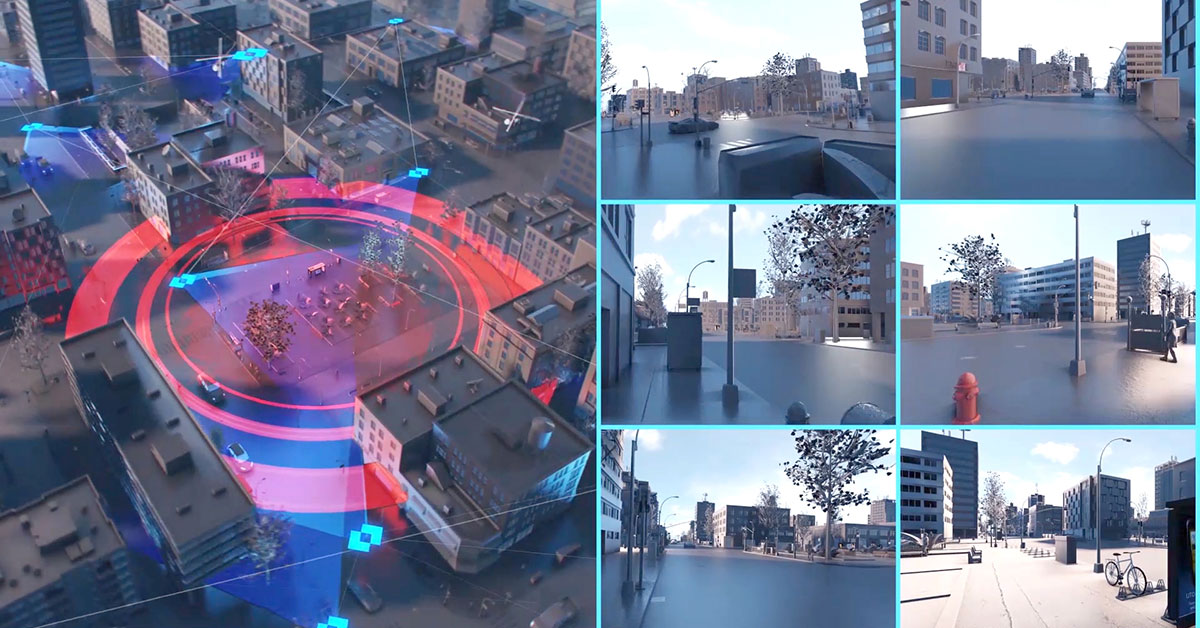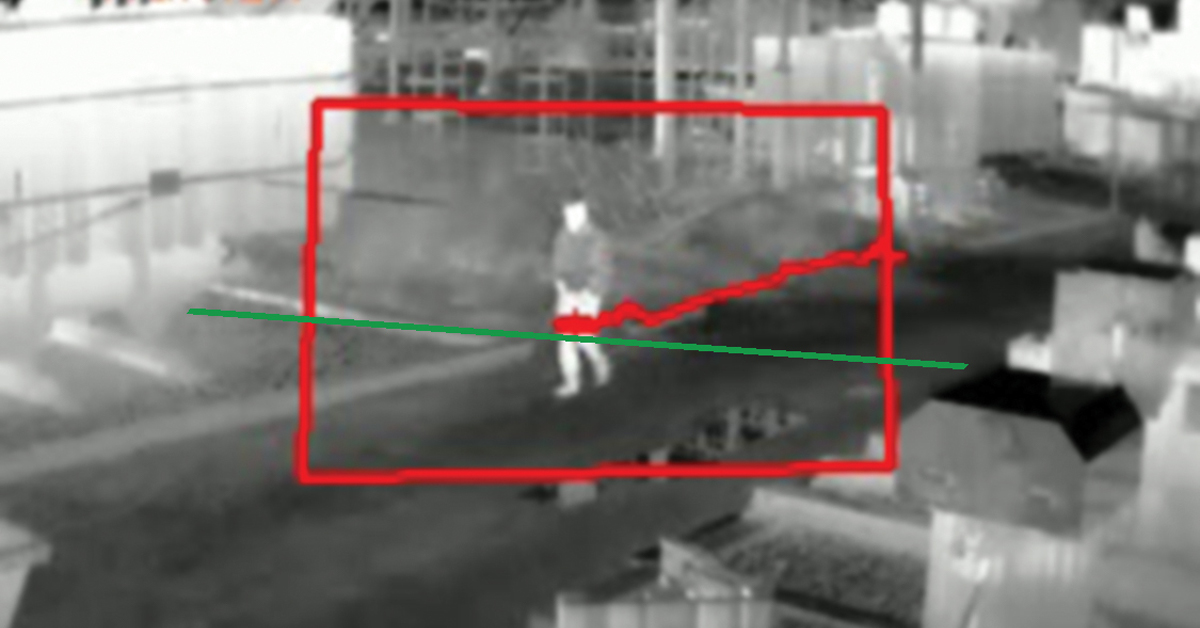Diamonds are a Thief's Best Friend
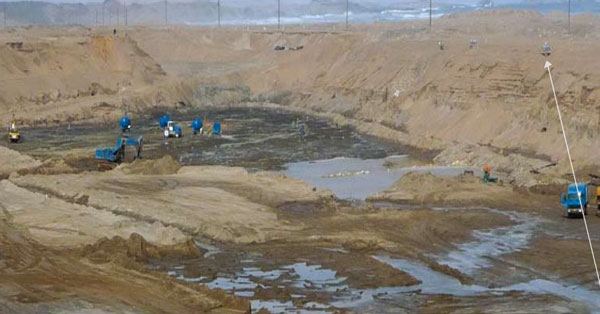
A big sign, stating: "Diamond theft hurts us all – Don't do it", is one of the first things visitors see when they arrive at the small airport of Oranjemund, Namibia.
Oranjemund, meaning mouth of the Orange River is situated in the far south western corner of Namibia. The town was established in 1936, following the discovery of diamonds on the north bank of the Orange River. Accessing the town is impossible without a special permit issued by the Namibian Ministry of Mines and Energy. Diamond theft is a big concern, for Oranjemund which is located within one of the richest diamond fields in the world. In order to prevent diamond theft, Namdeb has installed FLIR Systems thermal imaging cameras.
Oranjemund and Namdeb Diamond corporation
Prior to the discovery of diamonds in the Namibian desert, some prospecting had taken place along the coast as early as 1863. In 1908, a railway worker Zacharia Lewala, stumbled on a shiny treasure that started a major diamond rush. As a result, diamond mining regulations were introduced in 1911 and the Sperrgebiet or "forbidden territory" was declared.
In 1920, Sir Ernest Oppenheimer formed Consolidated Diamond Mines of South West Africa (CDM). Oranjemund, a unique town that owes its existence to diamond mining, was established in 1936. It services the Mining Area 1 and Orange River mines. In 1994, an agreement between CDM and the Government of the Republic of Namibia resulted in the formation of Namdeb Diamond Corporation (Pty) Limited. Namdeb Diamond Corporation (Pty) Limited is owned in equal shares by the Government of the Republic of Namibia and De Beers Centenary AG. Namdeb's redecessor, Consolidated Diamond Mines (CDM), was a wholly owned subsidiary of De Beers until 1994.
Namdeb Diamond Corporation (Pty) Ltd. is the world's leading alluvial diamond miner. It extracts diamonds from sand, gravel and clay using the open-pit method. The process involves removing the overlying ground and then extracting the diamonds.
"Needless to say, that the bedrock area is a critical area for security.", explains Mr. Harold Schoeman, Security Senior Technician at Namdeb, Oranjemund. "We monitor the workers closely to see that they are not trying to take away diamonds. We have introduced movable wireless camera systems called "spider cameras" on the bedrock mining sites. These are small, movable CCTV cameras installed on the bedrock, close to the workers. We can zoom in and follow their activities from a centralized video monitoring facility. The camera systems have assisted us with good quality video footage, which are used as evidence in disciplinary actions and in court cases of diamond theft."
"The workers are aware that they are being monitored so they are careful of what they do. Sometimes they hide stones in a remote area of the bedrock area. Once it is dark, they will try to come back and pick up the diamonds. In order to avoid this we have installed thermal imaging cameras.", says Mr. Groenewald. "We have installed mobile surveillance systems on all active bedrock sites. These systems include a FLIR Systems SR-100 thermal imaging camera."
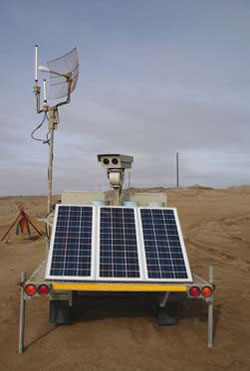
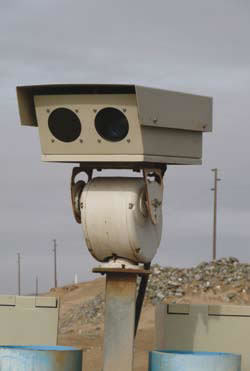
A moveable trailer with solar panel. The FLIR Systems SR-100 thermal imaging camera is mounted in a stainless steel protective housing which protects it against the harsh weather conditions alongside the Namibian coast.
